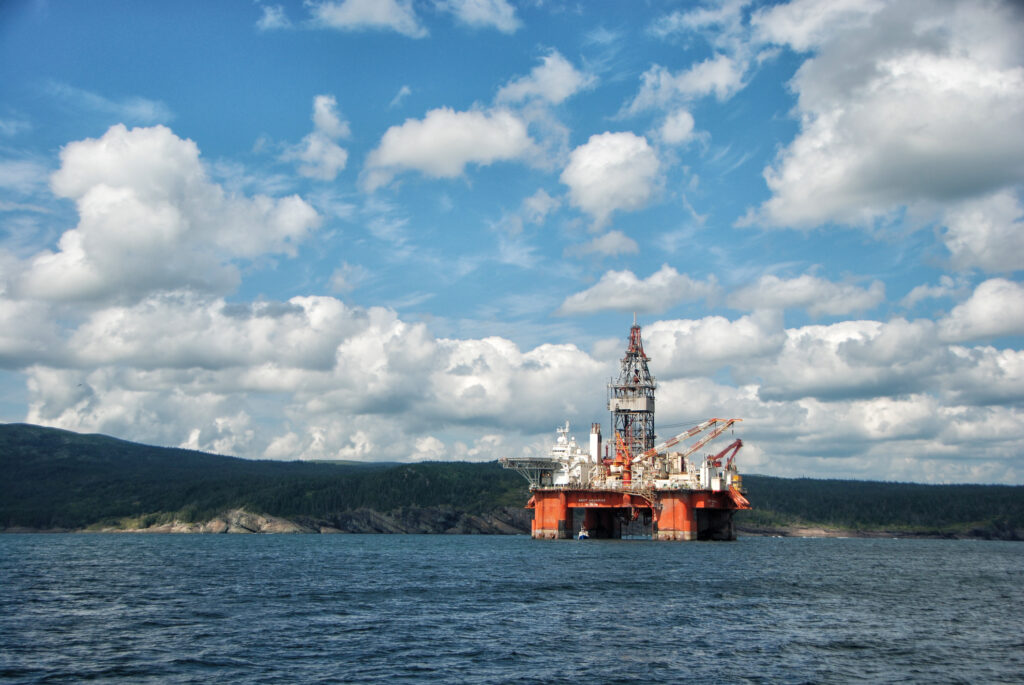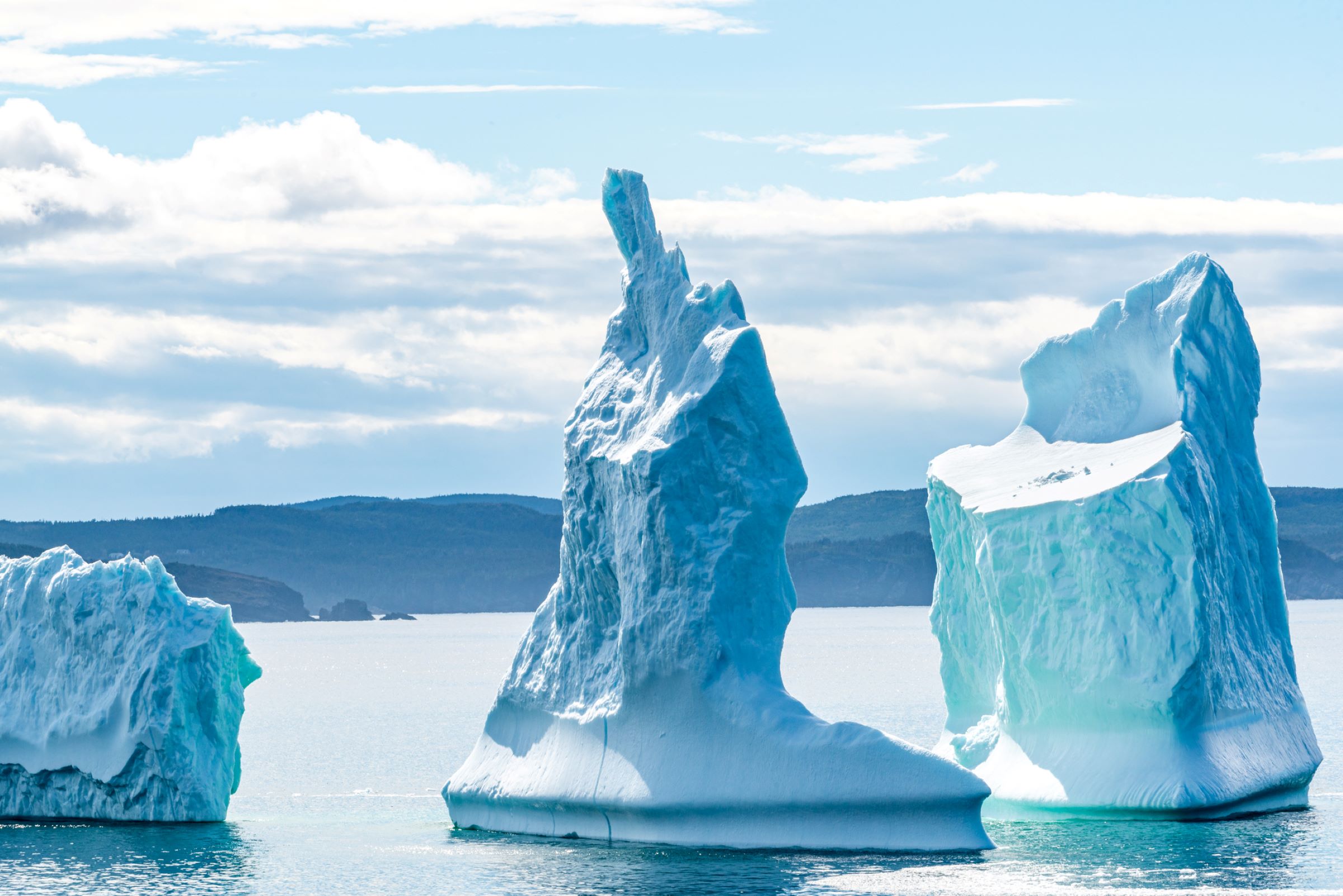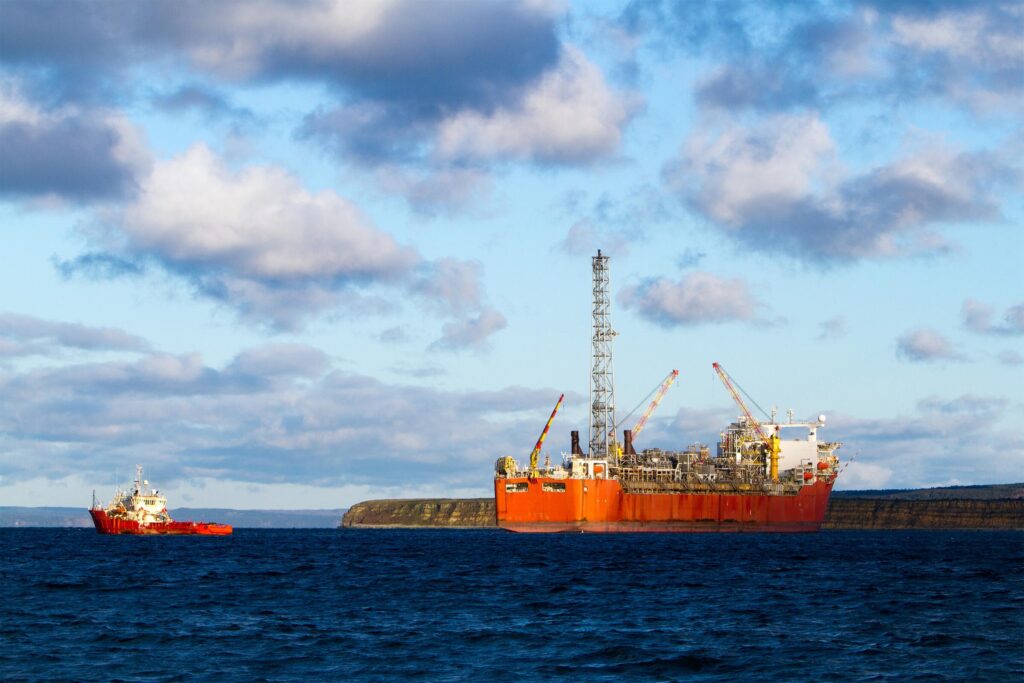About 4% of Canada’s oil production comes from four developments offshore Newfoundland and Labrador: Hibernia, Terra Nova, White Rose, and Hebron. (Source: Canadian Energy Regulator) One offshore project is in development – West White Rose. There is potential for future development from other discoveries in the area. Bay du Nord, for example, is an offshore development project consisting of several oil discoveries. The project was put on hold in 2022, but may be developed in the future.
Extracting oil from Canada’s offshore oil deposits is different from onshore (land-based) production.
- Companies begin the exploration process by reviewing existing geological and geophysical data to learn more about potential undersea reservoirs.
- Next, marine seismic surveys map geological structures under the seabed. If seismic data shows a geological structure that could contain oil and natural gas resources, a company may decide to drill an exploration well to confirm the presence of oil. Due to the high cost of drilling offshore, this detailed information is needed before a company will invest in drilling production wells.
- During the exploration drilling phase a company may drill one or multiple wells on a geological structure that could contain oil or natural gas. Drilling an offshore well can take anywhere from one to three months and the planning phase typically takes more than a year.
- If the exploration well is successful and makes a commercial discovery, the next step is to develop the resource. The offshore development phase can take five to 10 years, depending on the size of the project. During the development phase, the company prepares plans that outline exactly how the resource will be produced, the environmental protection measures that will be put in place, the safety measures that will be used on the project, and the benefits of the project such as employment, revenues, contracts, etc.
- Production begins. Producing oil offshore is a complex process due to the challenges of operating in remote locations, harsh weather, sea ice, and icebergs in some areas. Production facilities such as drilling / production platforms that sit on the ocean floor, called gravity based structures, or ships called floating production, storage, and offloading vessels (FPSOs) are built to withstand the offshore environment and its challenges.
Economic benefits of Canada’s offshore sector
Newfoundland and Labrador’s offshore oil industry provides many benefits to the regional and national economy.


2023-2025 Continuous Improvement Plan
The 2023-2025 plan recaps key achievements on environment, health, and safety performance from the first three years of this initiative and outlines new objectives for the next phase.

Canada’s offshore sector: further reading
In Canada’s offshore, a robust regulatory regime governs all offshore activity and offshore operators are committed to developing resources responsibly. Operators meet or exceed all environmental protection regulations and adhere to best practices related to environmental protection and mitigation.
